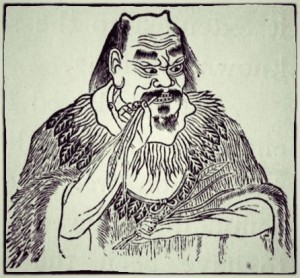Wind Pool
Meeting point of the Gallbladder and Sanjiao channels with the Yang Motility and Yang Linking vessels
Location: Below the occiput, approximately midway between Fengfu DU16 and Wangu GB12, in the hollow between the origins of the sternomastoid and trapezius muscles.
Actions:
- Eliminates wind
- Benefits the head and eyes
- Clears the sense organs
- Activates the channel and alleviates pain
Indications:
- Headache, head wind, one-sided and generalized headache, dizziness, visual dizziness, hypertension, hemiplegia, deviation of the mouth and eye, goiter, lockjaw.
- Insomnia, loss of memory, epilepsy, loss of speech following windstroke.
- Injury by cold, injury by cold with absence of sweating, chills and fever, warm febrile disease with absence of sweating, malaria, throat painful obstruction, swelling of the face, urticaria.
- Redness and pain of the eyes, redness and pain of the inner canthus, blurred vision, lacrimation, night blindness, dimness of vision.
- Nosebleed, rhinitis, nasal congestion and discharge.
- Deafness, tinnitus, blocked ears.
- Stiffness and pain of the neck with inability to turn the head, pain of the shoulder and upper back, pain of the lumbar spine, crooked lumbar spine leading to flaccidity and lack of strength in the sinews of the neck.
Notes:
- Fengchi GB20 is located at a pivotal point between the head and the body, and is one of the best points to treat diseases of the head, brain and sensory organs, especially the eyes.
- An important point for treating both internal and external wind affecting the head. Wind has a tendency to affect the upper part of the body most severely.
- Fengchi GB20 is especially indicated when wind is accompanied by headache, lacrimation, red and sore eyes, nasal congestion and discharge, sore throat, and swelling of the face.
- This point calms ascending internal wind and yang, and therefore treats symptoms such as headache, head wind, dizziness, deviation of the mouth and eyes, hemiplegia, lockjaw, and hypertension.
- Treats headache and dizziness due to any pattern of disharmony.
- Has a strong action on disorders of the eyes and nose, and to some extent the ears, whether caused by internal disharmony or external wind.
- Is said to ‘awaken the brain’ due to its connection with the Governing vessel via the yang linking vessel, and therefore is useful in treating the effects of windstroke, such as loss of speech, as well as epilepsy and loss of memory.
- Strongly activates the channel and alleviates pain, especially in the neck, shoulders, and upper back. It is also indicated for lumbar pain.

